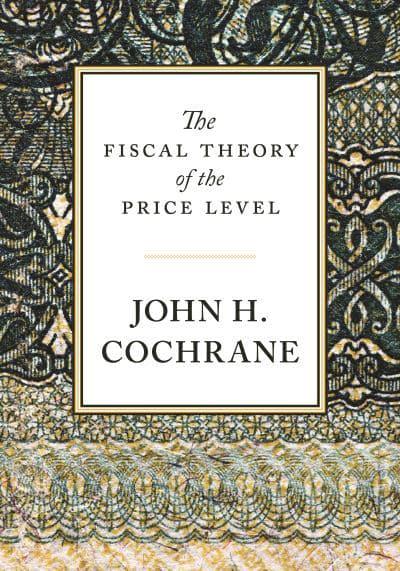Crisis cycle
challenges, evolution, and future of the Euro
- ISBN: 9780691271606
- Editorial: Princeton University Press
- Fecha de la edición: 2025
- Lugar de la edición: Princeton (NJ). Estados Unidos de Norteamérica
- Encuadernación: Cartoné
- Medidas: 24 cm
- Nº Pág.: 328
- Idiomas: Inglés

How the euro survived a series of crises, and how to make it more resilient
The euro has survived crises unimagined at its founding: the financial meltdown of 2007-2009, the sovereign debt crisis of 2010-2012, the pandemic, and the Russian invasion of Ukraine. The European Central Bank fought these crises with dramatic policy innovations, buying up vast amounts of debt and providing large loans to banks. But now everyone expects the ECB to intervene routinely, and the euro is more fragile as a result. Crisis Cycle recounts this history and offers recommendations for restoring a durable monetary union.
Monetary and fiscal policy are intertwined, especially in a currency union like the eurozone. Member states can be tempted to borrow and spend too much, and then count on the ECB to rescue them by printing money to buy their bonds. To avoid these disincentives, the ECB was founded with a narrow mandate: use interest rates to pursue price stability, and don't buy sovereign debt. Debt and deficit rules would keep countries from getting into trouble.
The ECB's emergency innovations brought back these disincentives. How can the EU avoid larger and larger bailouts? The authors argue that Europe needs a joint fiscal institution that can provide temporary help to sovereigns, a resolution mechanism so sovereign default is a motivating possibility, and bank reform that ensures sovereign default will not bring down the financial system. This timely book shows how to restore the euro's ambitious and effective founding framework. The unique group of authors combine extensive policy experience and authoritative academic credentials.
1 Introduction and Overview 1
1.1 A Founding Architecture 1
1.2 Erosion in Successive Crises 3
1.3 Reform 9
1.4 Other Voices 15
2 Key Economic Ideas 19
2.1 Monetary-Fiscal Interaction 19
2.2 Time Consistency and Commitment 29
2.3 Self-Fulfilling Crises 34
2.4 Central Bank Independence and Mandates 37
2.5 Tax Smoothing and State-Contingent Default 40
2.6 Lender of Last Resort and Financial Crises 42
2.7 Monetary Union 50
3 The Design of the Economic and Monetary Union 53
3.1 The Triple Lock 55
3.2 A Missing Piece 58
3.3 Monetary Union without Banking Union 61
3.4 Monetary Union without Fiscal Union Is Feasible 63
3.5 The European Central Bank 64
3.6 The Institutional Structure of the ECB 79
3.7 Balance of Payments and the ECB 84
3.8 Summary 91
4 Prelude to Financial Crisis 93
4.1 Debt and Deficits 93
4.2 Peripheral Debt and Trade Flows 95
4.3 Fragile Banks 98
4.4 Banking Crises 99
4.5 Policy Responses 102
5 The Sovereign Debt Crisis 105
5.1 Greece 108
5.2 Ireland 125
5.3 Portugal 127
5.4 Spain 128
5.5 Italy 130
5.6 Cyprus 131
5.7 Lessons 133
5.8 The ECB’s Securities Market Program 135
5.9 Whatever It Takes 138
5.10 Outright Monetary Transactions 140
6 Institutional Reforms 144
6.1 Fiscal Rules 145
6.2 The European Stability Mechanism, Conditionality, and the Troika 146
6.3 Banking Reforms 149
7 The Zero Bound 151
7.1 Asset Purchases (Quantitative Easing) 151
7.2 Subsidized Loans to Banks 154
7.3 2016–2019: Low Inflation Continues 156
8 The Pandemic 159
8.1 Monetary Response 159
8.2 Fiscal Response 167
9 Inflation, War, and Tightening 170
9.1 Inflation Returns 171
9.2 The Monetary Policy Response 173
9.3 Inflation’s Surge and Easing: Sources and
Lessons 176
9.4 Easing Inflation, and Synthesis 189
9.5 The Transmission Protection Instrument and
Flexible Purchases 190
10 The Unsustainable Present 194
10.1 Unsustainable Fiscal Policy 197
10.2 Lack of Structural Reforms and Growth 220
10.3 Reform Paralysis 223
10.4 Balance Sheet and Market Footprint 232
10.5 The ECB and the Balance of Payments 239
11 Reform Proposals 244
11.1 A European Fiscal Institution 246
11.2 European Bonds 253
11.3 ECB Lending: Banks and Target2 257
11.4 Restructuring 258
11.5 Sovereign Debt 262
11.6 Breaking the Sovereign-Bank Nexus 265
11.7 Emergency Liquidity Assistance and Money
Creation 270
11.8 Monetary Policy 273
11.9 Political Feasibility 275













